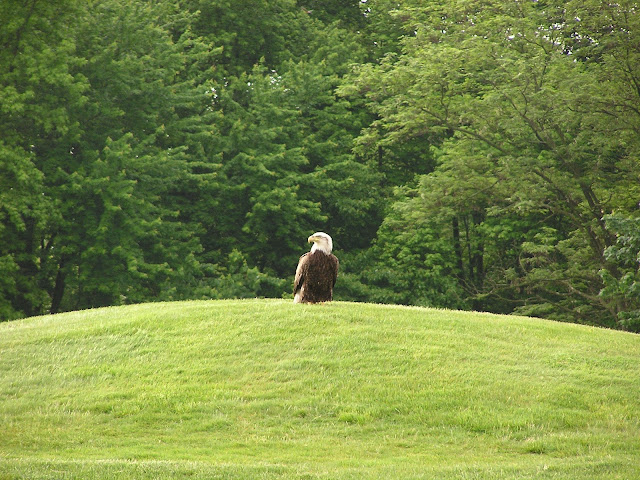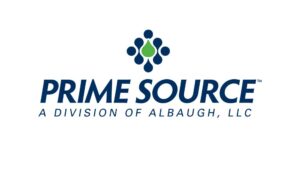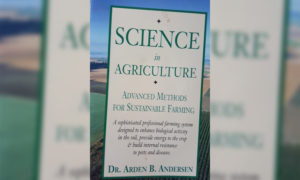What motivated your club to join the Audubon International Cooperative Sanctuary Program (ACSP) for Golf?
Laurel Creek was motivated to obtain Certification through the Audubon Cooperative Sanctuary Program (ACSP) to increase awareness of environmental responsibility and its benefits. Our key motivation is the opportunity to enhance environmental stewardship, as the program emphasizes the protection of wildlife, habitats, and natural resources. By reducing chemical use, conserving water, and managing landscapes to support biodiversity, Laurel Creek can become more sustainable while contributing positively to the local ecosystem. The ACSP specifically helps us in these areas by providing guidelines and best practices for sustainable golf course management.
Another significant incentive is the potential for cost savings. By adopting practices like efficient water management and reducing the use of pesticides and fertilizers, Laurel Creek can significantly cut operational costs over time. These eco-friendly practices preserve the environment and provide a solid financial return, improving Laurel Creek’s bottom line.
The Certification also offers a significant competitive advantage. As more golfers become environmentally conscious, certified courses can attract a wider audience by showcasing their commitment to sustainability. This recognition enhances the course’s reputation, offering a competitive edge in the market. Furthermore, Certification demonstrates Laurel Creek’s community leadership, as it engages in outreach and educational initiatives that involve the community and raise awareness about environmental protection.
Lastly, Certification aligns with regulatory trends. With increasing water use and chemical management regulations, Certification shows that Laurel Creek proactively addresses environmental concerns, making compliance easier and avoiding potential penalties. This Certification helps Laurel Creek balance profitability with long-term ecological responsibility.

What did it take to achieve ACSP certification – how long was the process, and what steps were involved?
Becoming certified through the ACSP for Golf Courses involves several steps focused on environmental improvement. Over a growing season, Laurel Creek conducted an environmental assessment to evaluate its current practices in water management, wildlife conservation, and chemical use. Based on this assessment, Laurel Creek developed and implemented strategies to address these areas.
Then, Laurel Creek submitted documentation to Audubon International, outlining its efforts and progress in the six focus areas: wildlife habitat management, water conservation, water quality management, chemical use reduction, outreach, and education. Audubon International reviews these reports, provides feedback, and suggests further enhancements.
What was most inspiring and/or surprising about the certification process for you and your crew?
One of the most inspiring aspects of becoming a certified Audubon Cooperative Sanctuary is the sense of accomplishment and pride it brings. Seeing how our efforts can directly enhance the natural environment is truly motivating. Golfers and staff alike may be surprised by the biodiversity that flourishes when natural habitats are respected and maintained.
Additionally, the sense of pride and purpose that comes with being part of a larger environmental initiative is highly motivating. Knowing that our daily tasks—adjusting irrigation systems or maintaining native plants—contribute to cost savings and ecological preservation adds value to our work.
Laurel Creek is also inspired by the level of community engagement involved. It’s not just about the course, but about the people who play and visit it. Laurel Creek’s Grounds Department has become the stewards of our property by educating golfers and visitors, thus fostering a deeper connection to our job and the Laurel Creek community.

What were / are the most challenging aspects of being certified and maintaining the standards required to achieve and retain that status?
The most challenging aspects of becoming and maintaining Audubon certification are the initial environmental assessments and the consistent implementation of sustainable practices. Reducing water usage and chemical dependency requires strategic planning and operational changes, which can be time-consuming. Additionally, implementing environmentally sustainable practices is challenged by playability expectations. Ensuring long-term commitment from staff, especially in maintaining wildlife habitats and adhering to strict environmental standards, adds to the difficulty. Regular monitoring and documentation for re-certification can also be challenging, requiring ongoing tracking of progress and results. Balancing the demands of maintaining the course’s playability while meeting ecological goals is an ongoing challenge.
How has Certification been shared with your members/customers/community, and what benefits has such exposure brought your way?
Certification is shared with members through signage, social media, and our Superintendent’s blog, highlighting Laurel Creek’s environmental efforts. This exposure enhances the course’s reputation for sustainability. Laurel Creek’s effort fosters local pride and positions it as a leader in environmental stewardship, boosting membership and support while contributing to a positive public image.

What would you share with other superintendents and course managers who are considering joining the Audubon International ACSP program?
I’d encourage other superintendents to view Certification as an environmental initiative and a practical, long-term investment in your course’s future. While the certification process requires commitment and effort, the rewards outweigh the challenges.
Start with small steps. The program provides a clear framework, and you can address areas such as water conservation, habitat management, or chemical use reduction at your own pace. Don’t feel overwhelmed—Audubon International offers support and resources to guide you. Even modest improvements can lead to significant environmental and financial benefits, such as reduced water and chemical costs.
Engage your team in the process. Involving staff in the certification journey helps develop a culture of sustainability on the course.
Another important aspect is the positive recognition you’ll receive. Certified courses can stand out to eco-conscious golfers, members, and the broader community, helping to boost your course’s reputation and attract new business. The Certification also makes compliance with environmental regulations easier, which can prevent costly penalties down the road.
Finally, consider the satisfaction of knowing your course is contributing to a healthier planet. Joining the ACSP program allows you to balance quality play with responsible stewardship—a win for everyone involved.
What is the best guidance or tip(s) you have received pertaining to being a superintendent and overseeing the golf course agronomy/maintenance department? (And from whom?)
I have received great mentorship from Laurel Creek’s Superintendent, John Slade, on the importance of holistic management. Balancing playability, environmental stewardship, and cost efficiency on the golf course is crucial. Superintendents can maintain high-quality playing conditions by integrating sustainable practices into course operations while reducing the ecological footprint. For example, implementing water conservation measures and reducing chemical use enhances turf health and habitat preservation without sacrificing playability. Holistic management also helps cut costs through resource efficiency, such as using native plants that require less water and maintenance. Courses can achieve a sustainable balance by considering the needs of golfers, the environment, and the budget.
About Audubon International
An environmentally focused non-profit organization, Audubon International offers members numerous certifications and conservation initiatives to protect the areas where we all live, work, and play. Its certifications are designed to increase environmental awareness, encourage sustainable environmental efforts, and educate both its members and their communities.





















